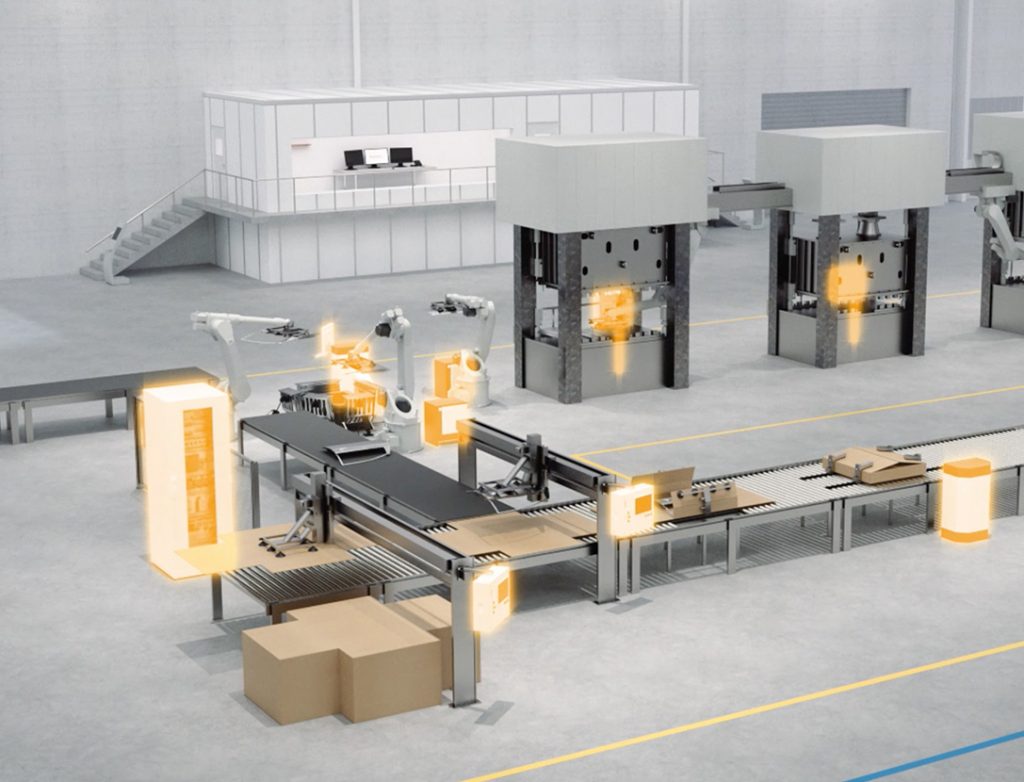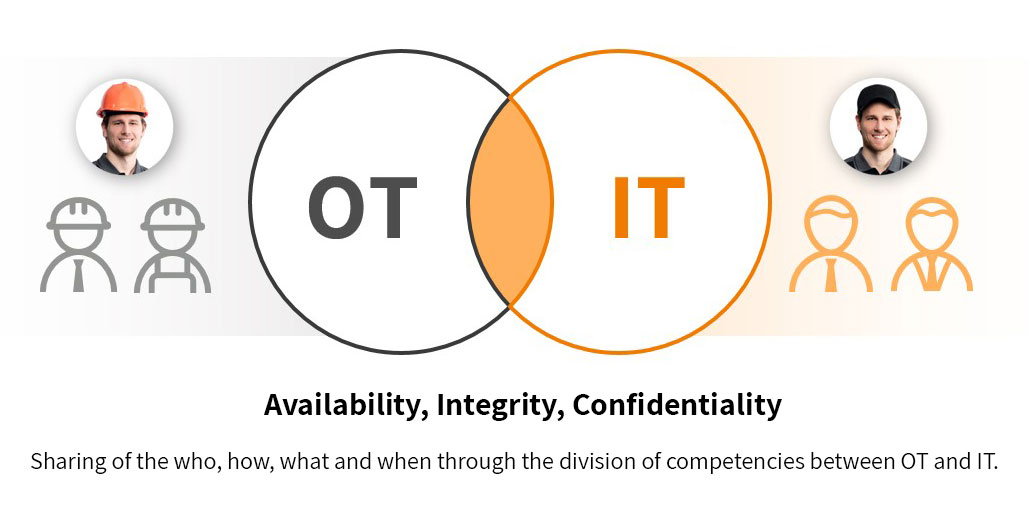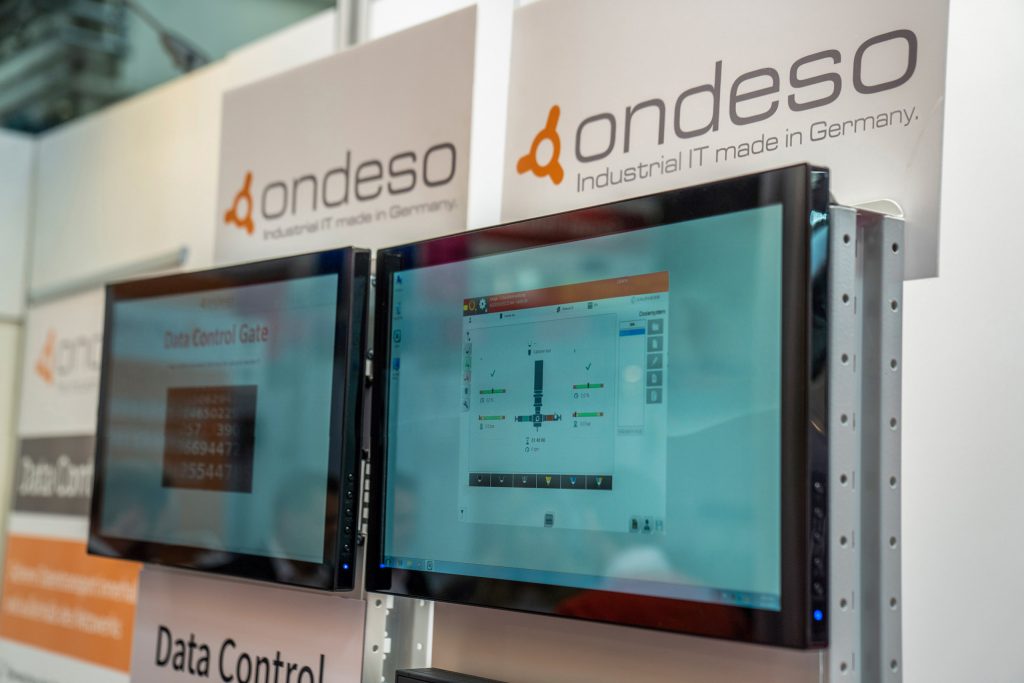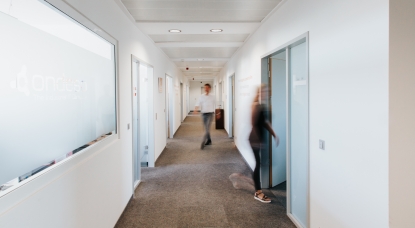From past times, we still know the “sneaker administration”, i.e. the IT specialist who personally installed new software and applied patches on site or in the field service at the customer’s premises. At least in the office environment, this personnel-intensive process has largely disappeared. Automated remote processes ensure uniform software and security statuses, while at the same time relieving the burden on hard-to-find IT specialists.
The maintenance of IT systems in the industrial environment, on the other hand, is often even more time-consuming than the one in the office. We show the biggest time wasters and how they can be eliminated.
The situation on the shopfloor is more complicated. OT (Operational Technology) is becoming more and more networked, modern machines enable connections to MES systems as well as remote maintenance or cloud-based system analyses. The digital transformation towards the smart factory brings with it an increasing number of (IT) devices on the shopfloor. In addition, the number of cyberattacks and targeted offenses on production networks is rising rapidly.
On top of that, there is a shortage of skilled workers. Qualified personnel with IT and production experience are in short supply.
And there is still another factor: if there are a lot of manual activities in the process, then long distances have a massive impact. Many production sites consist of several buildings, and some factory sites are so large that vehicles are needed to get to the site in a reasonable amount of time. In spite of this, the IT management in many production environments is only slightly automated.
Automate these 8 tasks to protect your IT systems from future cyberattacks and malware.

Let’s first look at the biggest time wasters we encounter in our daily work:
Typical for many industrial companies: There is no standard way of working in manufacturing with regard to IT. Devices and their locations are often unknown, because many machines hide more PCs, routers or gateways than expected. The list of existing assets is often maintained in Microsoft Excel, but usually in a slightly different way in each department.
Workflows are also often not uniformly regulated in production IT. From experience, at least one of the following examples should sound familiar to you:
Here you can learn more about the most important roles and tasks in Industrial IT Management.
In order to work efficiently and save costs, good cooperation between IT and OT is required. For this, first of all, a clear division of responsibilities and competencies is necessary to reduce unnecessary agreements and avoid loss of information (silent post effect).

Maintenance and field service technicians should not be given the feeling that they are unnecessary or not competent in the area of IT, nor that they have to do additional work. Rather, the aim is to give them more independence and responsibility through simplified IT processes. This allows them not only to upgrade hardware, but also to keep the software up to date.
A large saving of time is achieved by dispensing with manual monitoring of software installations. Here, expensive waiting times arise. Automated execution and testing of the installation can detect errors by themselves and thus call in the employee only when necessary.
In general, predefined, standardized, reproducible and independently executable processes ensure greater autonomy in production. Manual logbooks and shift handovers can be eliminated if there is automated documentation of the work performed.
Visualization of important and less relevant points in the software enables workers to focus on essential points and thus save time.
Equally important is a modern asset management system with a central database. This means that the plant manager not only knows about his inventory – control and patch tasks can as well be performed and monitored centrally, which saves considerable travel time. Since there is no manual reconciliation, there is no risk of incorrect documentation due to transmission or typing errors, because a false documentation is often even worse than no documentation at all.
Learn why your production IT also deserves good asset management and how best to start implementing it.

Since good software management can save travel costs in the overall view, the machine manufacturer may have a price advantage over the competition – not to mention a higher quality of the machine in the long term thanks to always up-to-date software versions and automatically documented maintenance work.
But that’s not all: completely new business models could emerge for machine suppliers and OEMs. Analogously to familiar assurance models from the IT world, service contracts that also include software updates could be offered. In this way, the plant operator is relieved of the maintenance of the OT systems while the machine manufacturer can offer his customers an all-in-one operating concept.
If you think even further, you could release new functionalities for your machines and systems via software in a kind of app store, such as optimized performance parameters or additional modules.
But even as it is, intelligent asset and patch management ensures lower costs with a more reliable system.
Specially developed software solutions can support you in implementing individual processes or entire workflows for optimum interaction between IT and OT. A proven and globally tested example of this is the Industrial IT Management platform ondeso SR. It allows you to easily configure and automate tasks such as patching clients, creating backups and/or distributing up-to-date software.
Simplify the industrial IT management of your production facilities thanks to automated processes.

Our OT specialists also support you in the creation and planning of corresponding concepts and help you with the implementation as well as the sustainable integration into ongoing production processes.

Here you can learn more about our company and our expertise as a pioneer and market leader.

Which companies rely on ondeso for their industrial IT management? You will find the answer here.

Would you like to learn more? Do not hesitate to contact us, we will be happy to help you.